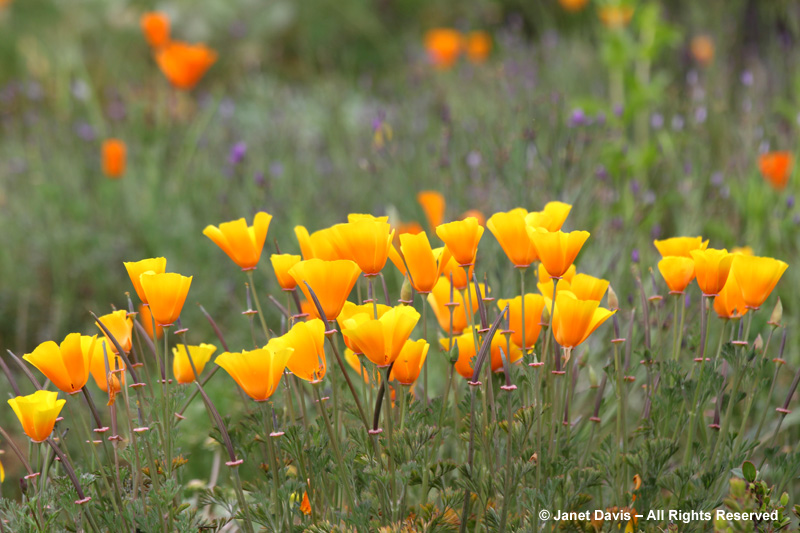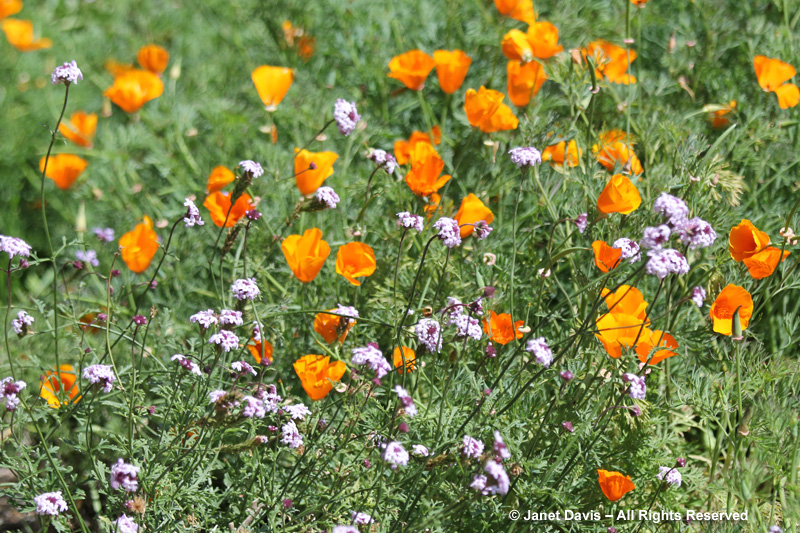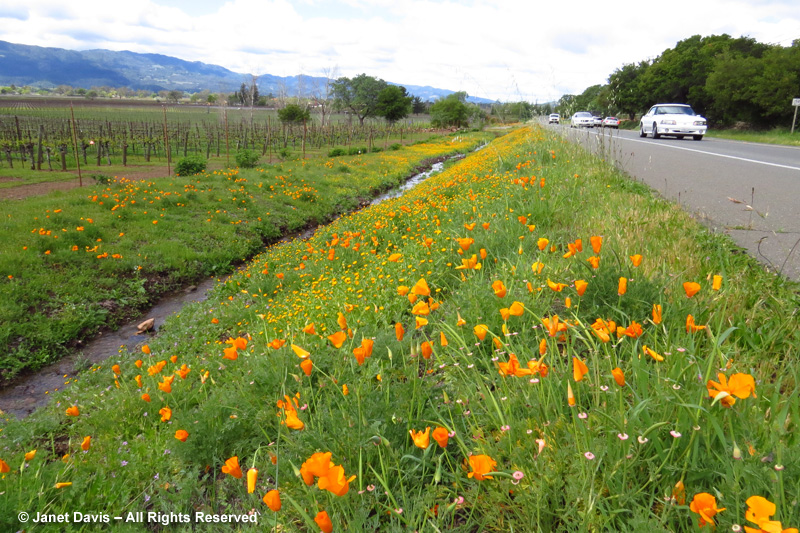You can’t visit California in spring without encountering Johann Friedrich Eschscholtz’s little orange poppy, the one he collected from the meadows of a pre-Gold Rush California in 1818 and carried home aboard the Russian expeditionary ship Rurik. A newly-minted physician, he was only 25 when he undertook the role of naturalist on the ship’s circumnavigation, also collecting specimens in the Pacific Islands, Brazil, Chile, Kamchatka and the Aleutian islands. Perhaps his surname is why so many confuse the spelling of California poppy’s botanical name, adding an errant “t” to Eschscholzia californica.
But Eschscholtz, of course, wasn’t the first European to notice California’s famous orange hillsides; the Spanish and Mexicans called the little poppy copa de oro, or cup of gold, when they owned the place. And long before then, native California Indians had used it medicinally. California poppies are highly variable, with two subspecies, one of which has four forms. But it is the annual form that most northerners long to grow – never, alas, as prolifically as the cheerful wildlings that carpet the Mojave Desert or line the grassy road edges throughout the state in spring. While they provide necessary pollen (no nectar) for beetles and bees, honey bees are especially fond of them.
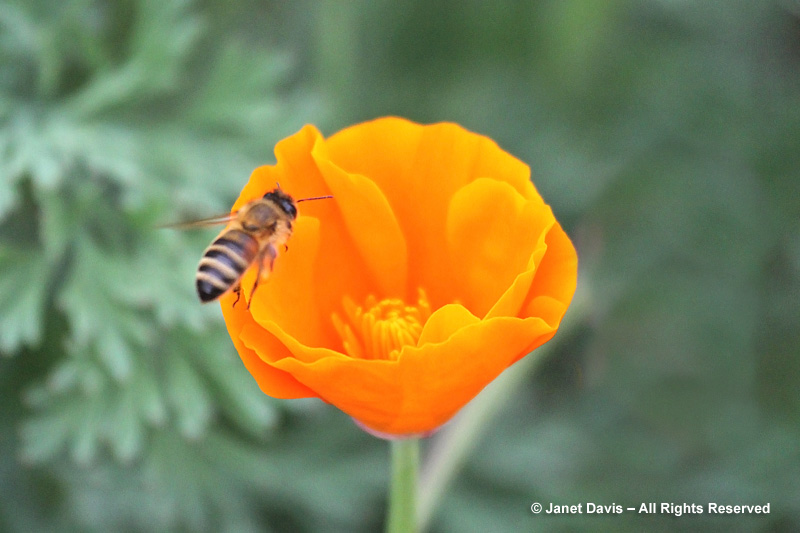
Though they offer no nectar, California poppies are an important source of pollen for insect pollinators, including honey bees.
If seeing masses of California poppies arrayed across hillsides is thrilling, seeing them paired with other California plants is equally satisfying, for someone interested in colour. And as everyone knows, there’s nothing like orange-and-blue or orange-and-purple for creating a little ‘zing’! So I loved finding them with cobalt-blue foothill penstemon (Penstemon heterophyllus) at Santa Barbara Botanic Garden……
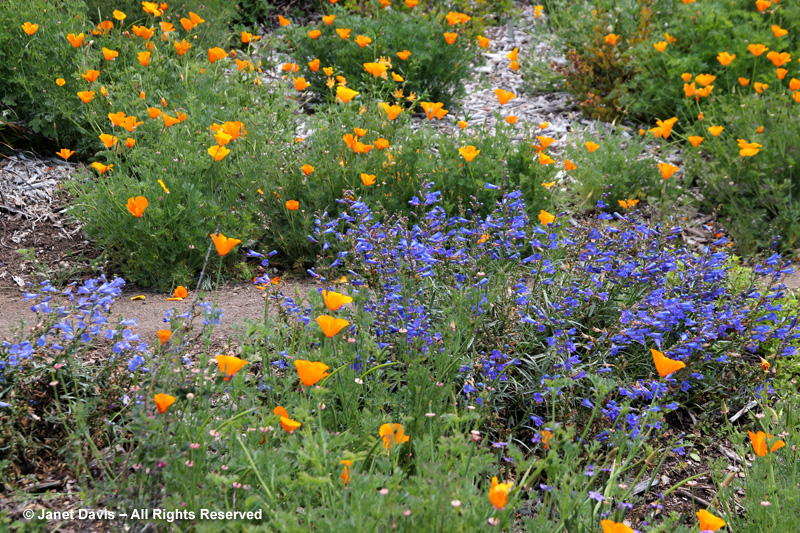
At the Santa Barbara Botanic Garden, foothills penstemon (P. heterophyllus) offers the perfect azure-blue complementary contrast to the orange California poppies.
and also with blue-eyed grass (Sisyrinchium bellum) there……
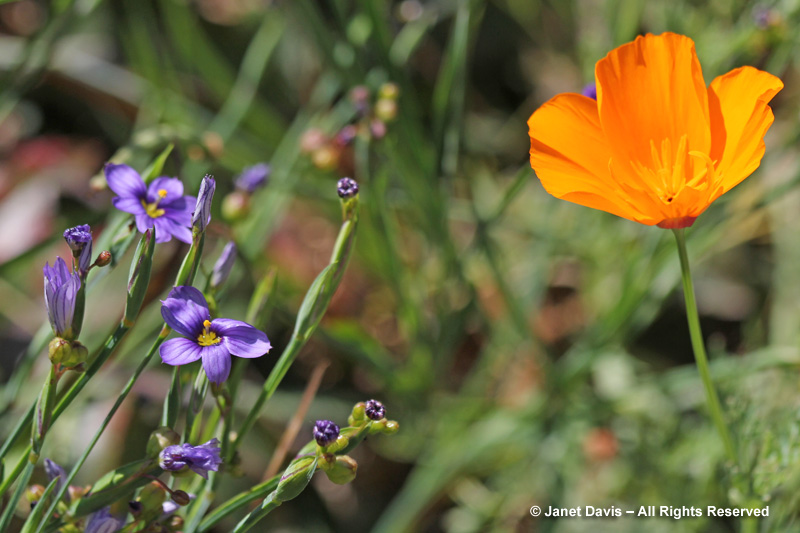
Though not exactly “blue”, blue-eyed grass (Sisyrinchium bellum) contrasts nicely with California poppies.
not to mention the delightfully-perfumed lilac verbena (Verbena lilacina)….
and with a Pacific Hybrid iris in San Francisco’s Golden Gate Park…..
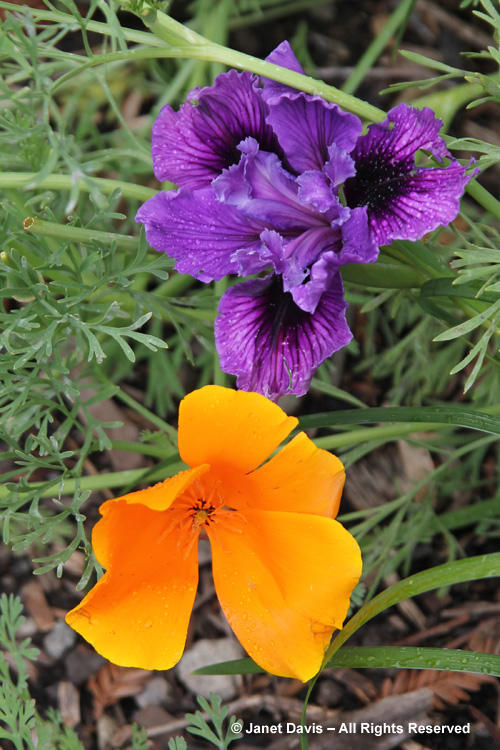
Both the native Iris douglasiana and the Pacific Coast Hybrids, like this one, are lovely with California poppies.
And they were no more beautifully arrayed anywhere than in their golden glory along with other wildlings on the grassy roadsides flanking the vineyards of the Napa Valley.

